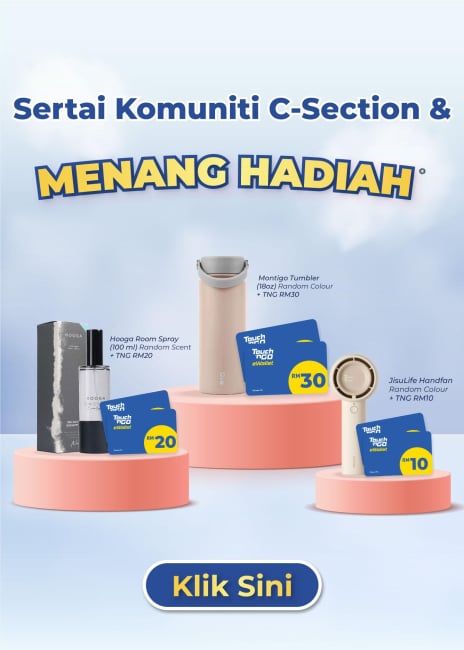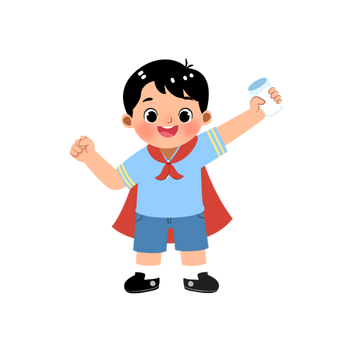Fresh air and a change of surroundings are good for both you and your baby, even in their first month, so take your baby out for walks when the weather is nice. In general, your child should wear one more layer than you do.

Getting your child outside is healthy
You and your baby can head outside right away. Many pediatricians recommend keeping newborns away from crowded places, where germs are prevalent. But as long as you take the proper precautions, a walk outside is great for everybody – especially for tired parents!
How to prepare for:
- Summer heat:Go out in the morning or early evening to avoid the highest daily temperatures. Have baby wear a hat and lightly-colored cotton clothes. Avoid direct sun and seek shade. Bring a spray bottle of water for a quick cool-down. Of course, splashing in a pool, lake, or stream with your baby is refreshing too!
- Wet or cold weather:Dress your baby in several thin layers, a warm hat, mittens, and insulating shoes or socks. To make sure baby’s not getting overheated, stick your hand on your child’s skin under the clothes and shed a layer if needed. The rule of thumb for older babies and young children is to dress them in one more layer of clothing than an adult would wear in the same conditions.
- Wind: If your baby seems uncomfortable, and you can’t shield your child from the wind, take them inside.
- Snow: Snowflakes are magical, especially to a baby. Get a baby snow suit so she doesn’t miss out on the fun. Hint: Look for them at second-hand shops – chances are they’ve only been used a few times.
Put sunscreen on your child
Your infant’s skin also is extremely susceptible to sunburn during the first six months, so it’s important to keep out of direct and reflected sunlight (e.g., off of water, sand, or concrete) as much as possible. If you must take them out in the sun, dress them in lightweight and light-colored clothing, with a bonnet or hat to shade their face. If they are lying or sitting in one place, make sure it is shady, and adjust their position to keep them in the shade as the sun moves. Sunscreen can be used on exposed areas of your baby if protective clothing, hats, and shade are not available. Apply it only on small areas of the body such as the face and the backs of the hands as needed. Test it out ahead of time on a small patch on their back to make sure they aren’t sensitive to it. Although sunscreen can be applied to all areas of the body that the sun can reach, be careful to avoid the eyes.
Don’t let your child under the sun for too long
Another warning for the hot-weather months: Do not let baby equipment (such as car safety seats and strollers) sit in the sun for a long period of time. When that happens, the plastic and metal parts can get hot enough to burn your child. Check the surface temperature of any such equipment before you allow your baby to come in contact with it.
In uncomfortably cold or rainy weather, keep your baby inside as much as possible. If you have to go out, bundle up and use a warm hat to cover their head and ears. You can shield their face from the cold with a blanket when you’re outside.
Be aware of poison plants
Making grass whistles, eating blackberries, blowing a dandelion into the wind: most plants and flowers are delightful parts of an outdoor childhood. For the few troublemakers, here are some tips:
- Learn what poison oak, poison sumac, and poison ivy look like. These are the three most common plants whose sap, when in contact with human skin, causes an allergic skin reaction. Poison ivy and poison oak both have shiny green leaves that grow three to a stem. When the child is older, you can teach them the rhyme: “Leaves of three, let them be.”
- Be sure to consult your pediatrician if you feel your baby is exhibiting an allergic rash.
- Babies explore their world by putting just about anything into their mouth. But some plants are actually poisonous to eat.
Dress your child appropriately
To check whether your child is clothed appropriately, feel their hands and feet and the skin on the chest. Their hands and feet should be slightly cooler than their body, but not cold. Their chest should feel warm. If their hands, feet, and chest feel cold, take them to a warm room, unwrap and feed something warm or hold their close so the heat from your body warm them up. Until your child’s temperature is back to normal, extra layers of clothing will just trap the cold, so use these other methods to warm the body before wrapping them in additional blankets or clothing.
Use bug repellents
Not all insects are as lovely as ladybugs and butterflies. But don’t let them keep you and your baby inside.
- Mosquitoes: First, learn how to keep mosquitoes from making a home in your backyard. Then, just so you are aware, check with your local public health department to find out if there are any known mosquito-borne diseases in your area (e.g. West Nile Virus, Zika).
- Ticks: Ticks live in warm and humid environments, especially in woody or grassy areas, so it’s best to avoid these environments with a baby. As a precaution, dress baby in light-colored clothing, so ticks can be spotted easily. Check your baby’s skin and hair for ticks when you come inside. Remember that the deer tick can carry Lyme disease, is only about the size of a sesame seed. Make sure you remove any ticks properly and consult your pediatrician.
- Stinging insects: Bees, wasps, and other stinging insects don’t attack unless provoked, but babies might annoy one by accident. If your baby does get stung, it will most likely cause some swelling and pain that will be relieved in a few hours. It is important to remove the stinger – use a credit card or fingernail and gently scrape it off horizontally. Then soak a cloth in cold water and press it over the area to reduce the pain and swelling.
- Allergic reaction: In rare instances, your baby may be allergic to bee stings, which is very dangerous. Symptoms of this allergy include: Rash over many parts of your baby’s body, shortness of breath, swollen tongue, hands, or face, weakness, and unconsciousness.
- Bug repellent: Bug repellents labeled “for the whole family” can usually be used once a child is over two months old. Talk with your pediatrician before using bug repellent on your baby.
[embed-health-tool-bmi]



















